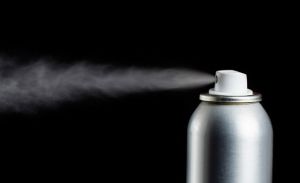Do Sunscreens Do More Harm Than Good? Cause Cancer? Make You Gain Weight?
 A look at some of the harmful chemicals that absorb through your skin from sunscreens... and healthier alternatives
by Catherine Ebeling - RN, BSN
A look at some of the harmful chemicals that absorb through your skin from sunscreens... and healthier alternatives
by Catherine Ebeling - RN, BSN
co-author: The Fat Burning Kitchen & The Top 101 Foods that FIGHT Aging
So we've been told over and over again that we should slather on the
sunscreen when you go out in the sun to prevent skin cancer, right?
Well, guess what? Think again! Many of the common chemicals in most
commercial sunscreen lotions actually can CONTRIBUTE to cancer,
stubborn abdominal fat (due to the xenoestrogens in sunscreen chemicals), and many other health problems.
Some of that sunscreen may be as damaging or more dangerous to your health than going without any sunscreen at all!
While there is still some risk in spending time in the summer sun
without sunscreen, your sunscreen itself can possibly pose a bigger
health risk. The chemicals in sunscreen are very harsh and are rapidly
absorbed into the bloodstream.
First of all, if you haven't read Mike Geary's
article about the benefits of small doses of daily sunshine, click here.
It's important to understand why small amounts of daily sunshine
(WITHOUT burning) is important to your health, vitamin D production,
hormone balance, and skin cancer prevention.
Now back to harsh chemical sunscreens... What kinds of chemical concoctions are you putting on your skin that are
absorbing into your bloodstream? Numerous studies have raised serious concerns about these chemicals' safety:
- Oxybenzone -- One of the main ingredients in many sunscreens.
Oxybenzone is also a penetration enhancer--a chemical that helps other
chemicals penetrate the skin — this means that any chemical on the skin
will be quickly absorbed into the bloodstream. This common sunscreen
ingredient is an endocrine disrupting chemical that damages cells and is
potentially dangerous for pregnant women especially. Oxybenzone has
been found to decrease sperm count and lengthen the estrous cycle in
mice; and it is potentially carcinogenic in humans.
- Retinyl palmitate -- Retinyls are vitamin A derivatives that are
often used in lotions and sunscreens. They are associated with the
accelerated growth of skin lesions and tumors when combined with sun
exposure. These retinyls are often used to reduce the look of wrinkles,
but FDA data suggests that retinyls have photo-carcinogenic properties,
which means that when it is applied to the skin and exposed to the sun,
it may speed up cancer formation! This ingredient is in about half the
sunscreens sold commercially.
- Octyl-methacinnamate has been shown to actually damage skin cells,
and many people are highly sensitive or allergic to this ingredient. It
can cause a serious rash, redness and irritation to sensitive
individuals.
- Bensopenone-3 (BP3), homosalate (HMS), 4-methyl-benzylidene camphor
(4-MBC), octyl-methoxycinnamate (OMC), and octyl-dimethyl-PABA
(OD-PABA) were all found to have estrogenic effects (these are
xenoestrogens) in the body, which can lead to weight gain (xenoestrogens
can cause "stubborn belly fat") and several types of cancer, including
breast cancer — even in men.
The Center for Disease Control (CDC) released a new study showing
that nearly all Americans are contaminated with oxybenzone, a
widely-used sunscreen ingredient. This chemical so far has shown
potential links to allergies, hormone disruption, and cell damage, as
well as low birth weight in babies whose mothers are exposed during
pregnancy.
The Environmental Working Group (
EWG) also has a guide that helps you to determine how chemical-laden your current sunscreen is.
Although sunscreens are meant for external use only, the popular
‘spray on’ sunscreens end up being inhaled as well, and are particularly
dangerous. While inhaled particles of any size can pose a health risk,
tiny nanoparticles -- ultra-tiny particles used in many of these
formulations -- can more easily penetrate linings and tissues in your
body and cause inflammation and increase risk of cancer or other
respiratory issues.
Ok, so what to do to help prevent sunburn and photo aging from the sun?
Remember from Mike's article near the top of this page, that small
daily doses of sunshine (10-30 minutes daily over most of body) can help
to increase your Vitamin D levels in your body and actually PROTECT you
and reduce your risk of skin cancer... The important key phrase there
is "small daily dose"
without burning.
If you are going to get more sun than that... The best and most
natural sunscreen you can get if you are going to be spending more than a
half hour out in the hot summer sun are the
sunblocks (mineral based) that contain
zinc oxide and/or titanium dioxide as their active ingredients. These ingredients are safe, natural ingredients that
physically
block UVA and UVB rays by sitting on top of the skin instead of
absorbing into the skin, and there are no health concerns about using
these natural sunblocks on your skin.
The downside of these types of natural physical sunblocks is that
they tend to leave a white coating on your skin so they don't look as
appealing as the chemical sunscreens which are invisible since they
absorb into your skin. So the other option is simply to make sure to
cover up with clothing if you don't want to use a mineral-based sunblock
that makes the skin look white.
There may be some zinc oxide and/or titanium dioxide based sunscreens
available that do a better job of not leaving such a white layer on the
skin, but you might have to experiment with different brands to find
one. Also some new brands add a brownish color to the lotion so that it
doesn't leave such a pasty white appearance and rubs on more bronze
instead.
And most important, to protect your skin and minimize the damage the sun can do to your skin...
EAT your sunscreen to best protect your skin against sun damage and cancer
Ok, I’m not talking about squeezing that stuff out of the bottle and actually eating it!
I am talking about protecting your skin from the inside out with
nutrition! One of the best ways to prevent sun damage, and protect your
skin, is with your diet. Yes, you can actually eat your own healthy
version of natural sunscreen by following these recommendations:
First, be sure to eat plenty of omega-3 rich foods in your daily
diet. Research studies show that eicosapentaenoic acid (also called EPA)
in omega 3 fats helps prolong the time that it takes skin to get burned
during sun exposure, and reduces your chances of skin cancer. Omega-3
fatty acids best sources come from
grass-fed beef, free range whole eggs, and cold-water wild caught fish like salmon, sardines, and mackerel.
But keep this in mind: An optimal balance of omega-3's to omega-6's
(1:1 to 2:1) is critical for many, many health factors, including skin
health. If you are eating much more omega 6 fatty acids in comparison to
omega 3’s, you actually increase your chances of skin cancer from the
sun.
It is a well-known fact that people who regularly eat a diet higher
in saturated fats and omega-3 fats tend to have much smoother, softer
skin. In contrast, a diet high in trans fats and excessively high
omega-6 fats ages skin and when people consume that type of diet they
tend to have older-looking skin and wrinkles.
So, here's how to eat the healthiest kind of sunscreen that is best for your body and your skin:
- Eliminate processed vegetable oils and instead eat grass fed
butter, extra virgin olive oil and virgin coconut oil. Some of the oils
highest in omega 6’s are soybean, sunflower, cottonseed, peanut, and
corn oil, so avoid these (this also means avoiding anything deep
fried!). Eliminate packaged processed junk food, fast food, and prepare
fresh, whole food from scratch.
- Eat Carotenoids. Carotenoids are colorful molecules that reflect UV
rays. Each of the pigments functions as Mother Nature’s sunblock. When
humans ingest carotenoids, they are actually deposited into the skin to
prevent sunburn and oxidative stress.
The best sources of carotenoids are pasture-raised whole eggs,
spirulina, dark-green leafy vegetables (kale, collards, spinach, etc),
and brightly colored yellow-orange fruits and vegetables (apricots,
cantaloupe, sweet red peppers, carrots, sweet potatoes, yams, and
squash).
The most potent carotenoid is a red pigment found in
algae, salmon, trout, shrimp, lobsters, and other shellfish. It is known
as astaxanthin. Astaxanthin is 1,000 times more effective at protecting
skin from UV damage than other carotenoids. One way that you can
provide a double whammy of skin protection is to take a daily Krill Oil supplement, as krill oil is the best natural source of astaxanthan as well as potent omega-3's in a form most usable by your body.
If you want to read more about this, this article shows how powerful astaxanthin is at protecting your skin.
- Lycopene is found in red fruits such as tomatoes, red bell pepper
and watermelon. Unlike many other fruits and vegetables, cooking
actually increases this nutrient. Tomato paste actually has much more
lycopene than fresh tomatoes. In one study, people who consumed tomato
paste had 33% more protection against sunburn compared to a control
group after 12 weeks.
- Drink plenty of green tea a day for internal sun protection. Green
tea is known to contain a category of antioxidants called polyphenols
that boost the ability of skin to protect itself from the sun. If the
idea of drinking warm green tea on a hot day is unappetizing, go for
cool glass of iced green tea.
Also keep in mind that ALL teas are rich sources of various
skin-protecting antioxidants, so consider expanding beyond just green
teas and try yerba mate, rooibos, tulsi tea, mint, chamomile, and other
teas... the more variety you use, the more diversity of antioxidants you
obtain.
- Snack on vitamin and flavanol-rich fruit like berries and other
fruit such as mangoes, kiwis, peaches, cherries, and plums that are
naturally sweet and juicy. Most fruits are rich in vitamin C, which is
also a great vitamin for skin health. Known for its role in building
collagen, vitamin C prevents wrinkles and photo damage through its
anti-inflammatory action. Toss some berries into a bowl for breakfast,
make a berry smoothie, or have berries for a healthy dessert.
To sum up:
1. Avoid the
dangerous chemicals in
regular chemical sunscreens. These contain potentially carcinogenic
compounds as well as chemicals that are xenoestrogens, which are known
to contribute to "stubborn belly fat".
2. Don't forget the skin protection and vitamin D
benefits of getting small doses (10-30 minutes daily) of daily
mid-day sun over a good portion of your body (without burning) before
slathering on the sunblock or covering up with more clothing.
3. If you must spend a long amount of time out in
the summer sun, eat a skin-healthy diet with lots of antioxidants such
as various teas, berries, carotenoids, etc. It's a good idea to take a
daily Krill Oil supplement in
the summer to protect your skin due to the natural form of astaxanthin
which has been proven to be one of the most powerful compounds to
protect your skin internally.
Also, protect your skin from excess sun and burning by either
covering up with clothing or with a safe and natural zinc oxide or
titanium oxide based sunscreen too... but ONLY after you've received
your small dose (10-30 minutes) of full sun over large portions of your
body to increase your vitamin D levels which protect your skin from
cancer.
And enjoy the summer sun and fun!
Please feel free to share the link to this article with your friends
and family, on your blogs or forums, or on Facebook or Twitter, and help
protect the health of your friends!
If you liked this article, please feel free to share it with your friends and family to help protect their health:
---------------------------------------------------------------------------------------------------------
With
warmer weather coming for most parts of the country, people all over
are gearing up for poolside gatherings, beach vacations and some good
ol’ fashioned sun soaking. The sun just seems to make us feel good, and
rightly so.
Fact: The sun is necessary for all human life.
Without the warming rays of this massive star, life on this planet would
cease to exist. Every type of living creature, including mankind, needs
sunlight in order to live. Humans have been exposed to the sun since
the beginning of time.
Warning against the sun
However,
for more than 30 years, doctors, beauty experts, health officials and
skin care product manufacturers have sent out strong warnings regarding
the dangers of the sun. We have been told to avoid any sun exposure
without sunscreen, because the rays will damage our skin and cause skin
cancer.
Much of this hype has been due to the fact that skin cancer is on the
rise. In 2002, over 50 percent of the 1.2 million cases of cancer in
the United States were skin cancers, and 10,000 of these cases were
fatal. These statistics have injected a rampant fear of the sun into
many unassuming people, who have decided to stay clear of the burning
ball of light at all costs. This however, has caused problems of its
own.
To say that the sun causes cancer is not entirely correct, and is
actually a great oversimplification of the truth. Well-researched and
documented studies show that vitamin D optimization may actually prevent
up to 16 different types of cancer.
Because of our fear of the sun, we have become a nation deficient in
vitamin D. This deficiency in itself has led to a surge in a number of
debilitating conditions such as depression, obesity, hypertension and
cancer. In addition, 60 percent of people with diabetes are vitamin D
deficient, and studies show very low levels of vitamin D in children,
women and the elderly.
It appears, to at least some extent, that the dangers of the sun have
been overemphasized while the benefits have been minimized. William
Grant, PhD conducted a
study
that revealed that 30 percent of cancer deaths could be prevented each
year if vitamin D levels were higher. That’s right: the very thing that
so many hide from may not cause cancer, but rather protect from it.
Furthermore, vitamin D is also essential for a number of healthy
bodily functions, such as muscle strength, cardiovascular health, strong
teeth, optimal blood pressure and a healthy immune system – to name
just a few.
Fact: The deadliest form of skin cancer, melanoma,
has been on the rise by about 3.5 percent per year since 1992, according
to the American Melanoma Foundation. Interestingly enough, this rise in
melanoma has been paralleled by an 4.2 percent increase in sunscreen
use.
Melanoma is a highly complex disease. While it appears that exposure
to the sun may play some role, most melanomas are located on body parts
that get little, if any, daily sun exposure.
Research has demonstrated that there appears to be some connection
between the risk of melanoma and the number of childhood burns one has
received. In addition, the use of tanning beds also increases the risk.
Good rays, bad rays
In order to completely understand the risk that the sun poses to our
health, we must better comprehend the sun itself. The sun gives us two
main types of wavelengths – UVA and UVB. While both can cause tanning
and burning, UVB rays are necessary for the skin to make vitamin D,
while UVA rays penetrate the skin deeply and can cause severe free
radical damage including wrinkles. They also destroy vitamin D.

UVA
rays shine constantly throughout the day and through the whole year,
while UVB rays are lowest in the morning and evening and highest at
midday and vary in strength throughout the year.
It only takes a little sun to make vitamin D
To encourage your body to produce vitamin D you don’t need to spend
countless hours in the hot sun and you most definately don’t want to
burn. Here are a few general guidelines to follow to help you get the
most from the sun’s helpful rays while staying safe from those that can
cause damage.
- If you are just getting out in the sun for the first time in the
season and have white skin, limit yourself to about 15 minutes between
the hours of 10am – 4pm.
- If you burn frequently, limit your time to a few minutes each day until your skin begins to slightly darken.
- Once you have a nice tan, you can increase the time you spend in the sun.
- Use a moisturizing non-SPF lotion to help keep your skin soft. If
you use an SPF lotion it will block out the beneficial UVB rays. Organic
coconut oil is a great option.
- After your initial exposure, spend the rest of the day in the shade or covered up.
- If you have to be in the sun for an extended period of time, use an SPF 15 non-toxic sunscreen.
The toxic truth about sunscreen
When you slather on sunscreen that does not offer natural UVA
protection, you are doing nothing short of wasting your money. Sunscreen
that blocks UVB rays and does not protect from UVA rays and will work
against you by limiting vitamin D production and damaging skin.
There are two main types of sunscreens – chemical and physical.
Chemical sunscreens prevent sunburn when they absorb UVA rays, but can
increase the risk of cancer. Physical sunscreens contain inert minerals
that reflect ultraviolet rays away from the skin, and are considered
safe and effective.
Most of what you find in the store are chemical sunscreens, which may
contain from three to six of the following active ingredients:
oxybenzone, avobenzone, octocrylene, homosalate, octinoxate and
octocrylene.
Almost all products contain avobenzone – the agent for filtering out
skin-damaging UVA rays. There is some concern, however, that this
substance may break down when exposed to the sun. Other chemicals, such
as octocrylene, are often added as stabilizers.
Studies done on a number of the chemicals found in commercial
sunscreen indicate that they may disrupt hormones. Animal research also
suggests that oxybenzone (found in 80 percent of chemical sunscreen) and
octinoxate are toxic to reproductive systems and can interfere with
development.
While more testing is yet to be done, many are concerned that the
high level of toxicity found in these active ingredients may undermine
any benefit that this type of sunscreen offers. Like personal care
products, sunscreens penetrate the skin and deserve special attention.
Studies done at the University of Zurich (2010) found sunscreen
chemicals in 85 percent of milk samples. Four of the chemicals that were
found are commonly used in American sunscreens.
Avoid sunscreens with retinol
Sunscreens that contains vitamin A or retinol may actually speed the
development of skin tumors and lesions when sunlight is present,
according to a
2009 study done by the National Toxicology Program.
The Food and Drug Administration published a study in 2011 that
concluded the same thing. Since this time, consumer advocates have been
urging the FDA to restrict the use of vitamin A in topical products.
Avoid spray-on sunscreens
Vitamin A and toxic chemicals are not the only thing you have to
worry about in sunscreen. In July of 2012, a very scary incident
occurred for one man who applied aerosol sunscreen and immediately
walked over to his barbecue.
Upon lighting the grill, he sustained 2nd degree burns, because the
sunscreen had not had time to set into his skin, neither did the
propellant chemicals have adequate time to evaporate. According to news
reports, the spray also left a vapor trail that added insult to injury.
He caught on fire immediately after lighting the grill.
Banana Boat, the makers of the aerosol sunscreen in question,
voluntarily recalled their product after hearing of the incident. The
company cited a problem with the spray valve as being the reason for the
accident.
“The spray valve opening on the affected products dispenses more than
is typical in the industry for continuous sun care sprays. As a result,
the product is taking longer to dry on the skin than is typical with
other continuous sprays. If a consumer comes into contact with a flame
or spark prior to complete drying of the product on the skin, there is a
potential for the product to ignite.”
Mothers of young kids, and many other people of all ages, love the
ease of application that aerosol offers, as well as the fact that spray
sunscreen makes it easy to cover all of the hard-to-reach spots.
But are you willing to trade convenience for health?
Besides the fact that aerosols are highly flammable, there are more concerns with this type of sun protection.
First, the Food and Drug Administration has mounting concerns that
aerosol sunscreens can be inhaled during application. Both the
propellant chemicals and the nanoparticles of zinc oxide and titanium
dioxide (found safe in other forms) worry scientists, who say that these
particles are easily ingested.
Although the particles can’t be absorbed through the skin, they can
accumulate in different organs in the body once they are ingested.
Because they are so small, they can move freely throughout the body,
causing problems at the sub-cellular level. What is worse is that the
body can’t get rid of them.
Each time the sunscreen nozzle is pressed, these particles are
transported some 20 feet in all directions, landing on everything in
sight. Everyone in the danger zone gets to breathe in the dangerous
particles, even if they don’t want to.

The
International Agency for Research on Carcinogens classified titanium
dioxide as a “possible carcinogen” when inhaled in high doses as from an
aerosol can. As noted, it is very hard for the lungs to clear the tiny
particles, which are easily passed into the bloodstream. When these
particles penetrate lung or skin tissue, they can cause severe organ
damage.
Use caution with loose powder sunscreens as well for the same reason;
they contain particles that could end up in the lungs and cause damage.
There are presently no recommendations or guidelines set by the US
government regarding the size and characteristics of nanoparticles, to
protect from the sun and be safe to users at the same time. As with
other personal care products, this is a “caveat emptor” circumstance
where consumers must do their own research with regards to safety.
Staying safe
Playing it safe requires forethought. Obviously, the sun is a very
important part of health, one that should not be ignored. However, there
are rules.
- Playing or laying all day in the hot sun without any protection and getting burned to a crisp must be avoided at all costs.
- Be especially careful with young children; avoid sunburn as much as possible.
- Try to stay in the shade between the hours of 12 and 3pm; this is
when the sun’s rays are the hottest and can cause the most damage.
- Wear lightweight, white clothing if possible, and a hat if you have to be in the sun for long periods of time.
- Avoid tanning beds.
- Never tan through a window – you will get all UVA rays and none of the beneficial UVB rays.
The Environmental Working Group urges us not to use sunscreen as a
tool to prolong time spent in the sun, and to check our skin often for
irregular moles or other suspicious spots.
Being choosy about the type of sunscreen that you use for yourself
and your family is critical. The best is one made from natural
ingredients that protect you from damaging rays, don’t break down on the
skin, and allow at least some penetration of UVB rays for the
production of vitamin D.
Visit The Environmental Working Group for a list of
safe sunscreens which contain non- toxic ingredients and offer protection from damaging UVA rays without compromising UVB exposure.
Remember: Enjoy the sun, respect the sun and know
what is in your sunscreen. For natural sun protection try coconut oil.
Coconut oil has been shown to have between
7-10 spf and is a great moisturizer for the skin.
For 9 more reasons to use Coconut Oil every day, click here (3 of them are shocking).
-The Alternative Daily
Sources:
http://boston.cbslocal.com/2012/10/19/banana-boat-aerosol-sunscreen-recalled-over-fire-danger
http://www.easterbrook.ca/steve/2012/04/aerosols-are-they-good-or-bad
http://thepeopleschemist.com/proof-sunshine-does-not-cause-skin-cancer
http://www.particleandfibretoxicology.com/content/10/1/15
http://www.ewg.org/2013sunscreen/nanoparticles-in-sunscreen
http://suntanscience.com/toxicsunscreens.php





 A look at some of the harmful chemicals that absorb through your skin from sunscreens... and healthier alternatives
A look at some of the harmful chemicals that absorb through your skin from sunscreens... and healthier alternatives UVA
rays shine constantly throughout the day and through the whole year,
while UVB rays are lowest in the morning and evening and highest at
midday and vary in strength throughout the year.
UVA
rays shine constantly throughout the day and through the whole year,
while UVB rays are lowest in the morning and evening and highest at
midday and vary in strength throughout the year. The
International Agency for Research on Carcinogens classified titanium
dioxide as a “possible carcinogen” when inhaled in high doses as from an
aerosol can. As noted, it is very hard for the lungs to clear the tiny
particles, which are easily passed into the bloodstream. When these
particles penetrate lung or skin tissue, they can cause severe organ
damage.
The
International Agency for Research on Carcinogens classified titanium
dioxide as a “possible carcinogen” when inhaled in high doses as from an
aerosol can. As noted, it is very hard for the lungs to clear the tiny
particles, which are easily passed into the bloodstream. When these
particles penetrate lung or skin tissue, they can cause severe organ
damage.